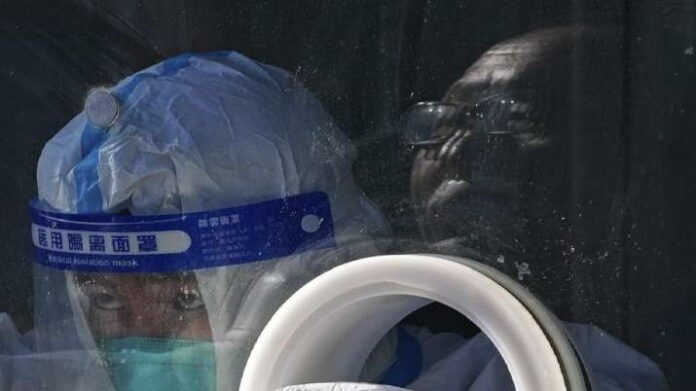| Translate This News In |
|---|
Washington : Scientists and health officials from all over the world are watching a descendant of the omicron type that has been detected in at least 40 nations, including the United States.
Because of some genetic features that make it considerably difficult to detect, this variant of the coronavirus, dubbed BA.2, is commonly considered stealthier than the original type of omicron. Some scientists are concerned that it may possibly be more contagious.
They claim, however, that there is still a lot they don’t know about it, such as whether it evades immunizations better or produces more severe sickness.
WHERE HAS IT SPREAD?
Almost 15,000 genetic sequences of BA.2 have been posted to GISAID, a global network for exchanging coronavirus data, since mid-November. 96 of the sequencing cases originated from the United States on Tuesday morning.
“We haven’t seen it start to gain ground” in the United States, according to Dr. Wesley Long, a pathologist at Houston Methodist Hospital in Texas, which has found three instances of BA.2.
Asia and Europe seem to have a higher prevalence of the mutation. According to Statens Serum Institut, which is under the Danish Ministry of Health, it accounted for 45 percent of all COVID-19 cases in Denmark in mid-January, up from 20 percent two weeks prior.
WHAT DO WE KNOW ABOUT THIS VIRUS VERSION?
There are a lot of mutations in BA.2. The original omicron shared about 20 of these in the spike protein that studded the outside of the virus. However, it has additional genetic alterations that were not present in the original version.
According to Dr. Jeremy Luban, a virologist at the University of Massachusetts Medical School, it’s unknown how relevant those changes are, especially in a population that has experienced the original omicron.
For the time being, BA.1 and BA.2 are considered subsets of omicron. If it is deemed a globally significant “variant of concern,” however, global health experts may assign it its own Greek letter moniker.
The rapid expansion of BA.2 in some areas raises fears that it will spread farther.
“We have some signs that it may be as contagious as (original) omicron, if not somewhat more contagious, because it can compete with it in some regions,” Long said. “However, we aren’t certain why that is.”
According to a preliminary investigation conducted by Danish experts, there are no differences in hospitalizations between BA.2 and the original omicron. Scientists are still investigating how contagious this variant is and how effective current immunizations are against it. It’s also unknown how effective medicines will be.
Doctors are also unsure if someone who has already contracted COVID-19 as a result of omicron can be infected with BA.2. They are optimistic, though, because a previous omicron infection may reduce the severity of sickness if someone acquires BA.2.
According to Dr. Daniel Kuritzkes, an infectious diseases expert at Brigham and Women’s Hospital, the two versions of omicron have enough in common that infection with the original mutant “may provide you cross-protection against BA.2.”
Scientists will attempt to see if antibodies from an original omicron infection can “neutralise BA.2 in the laboratory and then extrapolate from there,” he said.
HEALTH AGENCIES: HOW CONCERNED ARE THEY?
The World Health Organization recognises omicron as a variation of concern, the most dangerous coronavirus mutant classification, but it does not give BA.2 its own designation. However, given the emergence of BA.2 in some nations, the organisation believes that investigations into the virus “should be priority.”
Meanwhile, the UK Health Security Agency has labelled BA.2 as a “variant under investigation,” noting increased numbers in the UK and elsewhere. In the United Kingdom, however, the original variant of omicron continues to be the most popular.
WHY IS DETECTION MORE DIFFICULT?
Because of what’s known as “S gene target failure,” the original strain of omicron had genetic traits that allowed health officials to quickly distinguish it from delta using a particular PCR test.
This genetic peculiarity does not exist in BA.2. BA.2 appears to be delta in the test, according to Long.
He clarified, “It’s not that the test missed it; it just doesn’t look like omicron.” “‘Stealth omicron’ does not imply that it will be undetectable.’ All of our PCR assays are still sensitive to it.”
HOW CAN YOU PROTECT YOURSELF?
Doctors advise taking the same measures they’ve always advised: be vaccinated and follow public health advice about wearing masks, avoiding crowds, and remaining at home while unwell.
Long continued, “The vaccines continue to provide effective protection against major disease, hospitalisation, and death.” “Even if you’ve already had COVID 19—a natural infection—the vaccine’s protection is greater, longer-lasting, and actually… works well for people who’ve already been infected.”
The most recent edition serves as just another reminder that the pandemic is far from over.
“We all wish it were gone,” Long said, “but we’re going to be at danger of new strains emerging until we get the globe vaccinated.”

















